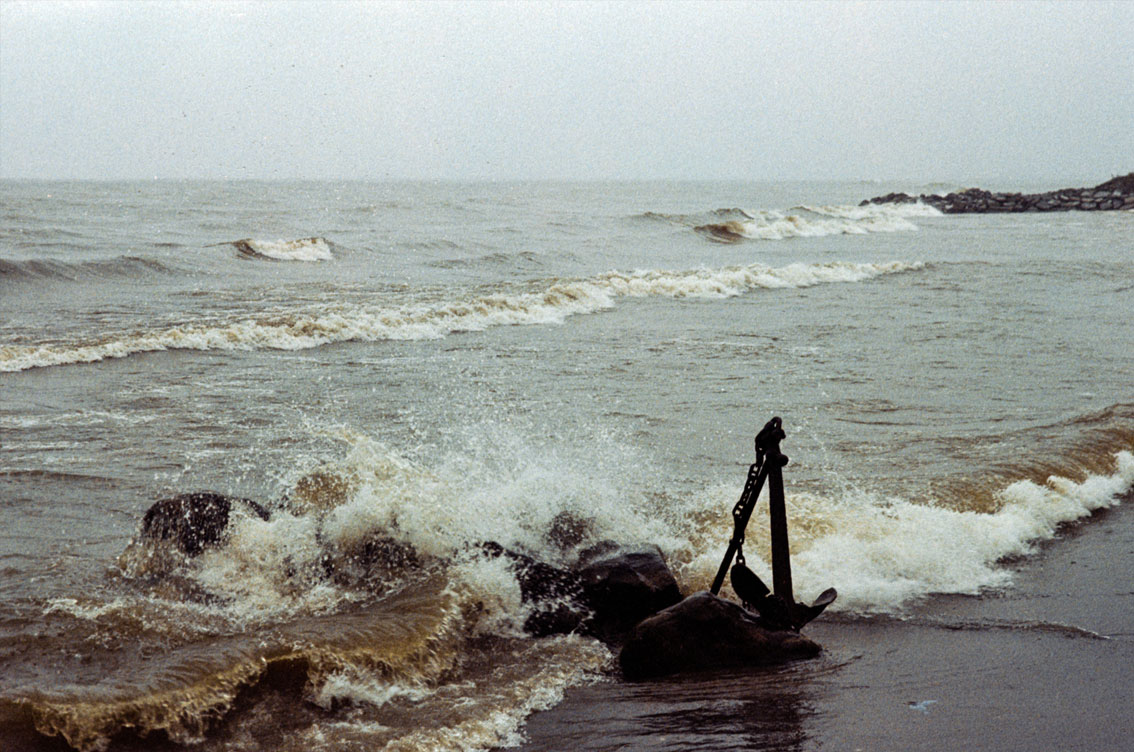The Port, City 1, excerpt from La Ceiba de la memoria, by Roberto Burgos Cantor
María Constanza Guzmán and Joshua M. Price
PORTFOLIO: LATIN AMERICA AND THE CARIBBEAN
In the rain, the port disappears. The sea extends beyond where the eye can reach. And all is water. Sailors proceed with caution, trapped by the persistent, windless rain. Islands and reefs, sand beds, or coralline rock may emerge at any time and destroy the hull. There isn’t enough visibility to avoid them. These rains fall quietly and seem to be there forever, with their soft and even intensity. They show no sign of ever subsiding. And just as they arrive, they disappear. The sea, the atmosphere and the rain all turn the colour of iron with the cloud-like iridescence of a crab’s shell. Crab world: slow movements; backward-backward, sideways motion. Where could the port be now. The sea changes colour. Ancient rust. Land vegetation and subterranean clay. River currents loaded with the outpours of disemboweled caymans. Dead women travel wrapped in sticks and rags, tied to tree trunks or to broken-down ships that get stranded on river islets or amid taruya branches, overgrown during winter. The women were not buried by a priest. Their relatives did not have money to pay for a mass or a proper funeral. The manatees that managed to escape the hunters who chased them with clubs, died in the mid river before finding refuge and were dragged to the estuary. Rivers of detritus. Runoff from the earth. Mix of odours brought up by the rain and stalled, like the water that won’t stop falling.
El Puerto. Ciudad 1
Bajo la lluvia el puerto desaparece. El mar se extiende entonces más allá de donde alcanza la vista. Y todo es agua. La navegación, encerrada en la persistencia del aguacero, sin vientos, se hace con cautela. Islas y arrecifes, fondos de arena, bajos de roca coralina, pueden surgir y destrozar el casco. No hay distancia para esquivarlos. Esas precipitaciones que descienden silenciosas y parecen estar ahí desde siempre con su intensidad suave y pareja, no dan signos de amainar nunca. Desaparecen como llegan. El mar, la atmósfera y la lluvia toman el color del hierro y nubes tornasol de la caparazón de los cangrejos. Mundo cangrejo: desplazamientos lentos, atrás-atrás, de lado. Dónde está el puerto. El mar cambia de color. Antiguas herrumbres. Vegetales de tierra y arcillas subterráneas. Corrientes de río cargadas de los efluvios de los caimanes destripados. Y las mujeres muertas viajan envueltas en fardos de ramas y trapos. Amarradas a troncos o a embarcaciones averiadas que se varan en los islotes del río o entre las ramificaciones de la taruya, crecida por el invierno. No las enterraba el cura. Los deudos carecían de plata para pagar la misa y las bendiciones del funeral. Los manatíes que escapaban de la cacería con palos. Morían en la mitad del cauce antes de alcanzar refugio y eran arrastrados a la desembocadura. Ríos de detritus. Desaguaderos de la tierra. Olores revueltos que vienen con la lluvia y están ahí detenidos como el agua que no deja de caer.

